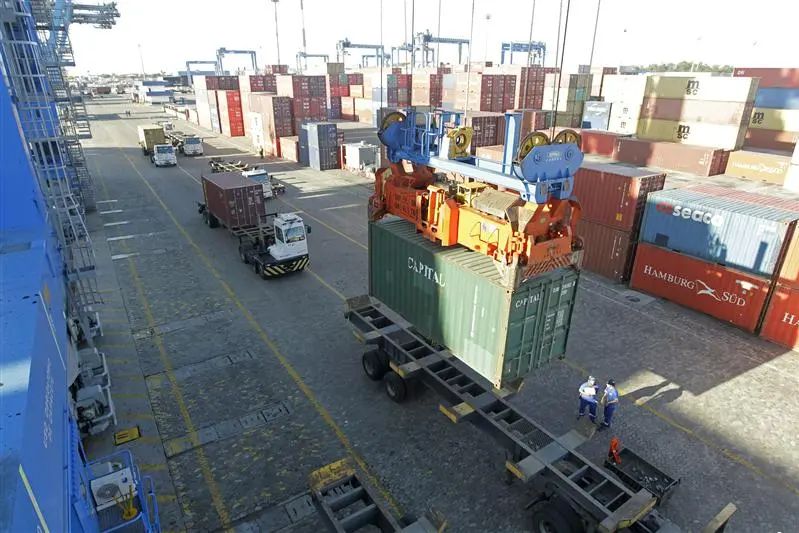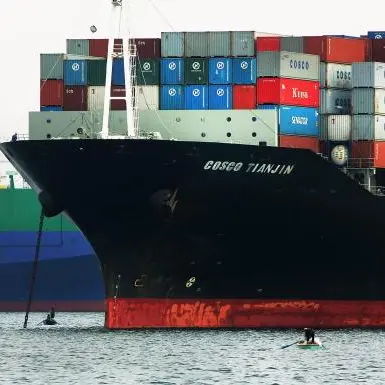PHOTO
JEDDAH — Despite global dips, the container shipping trade saw the strongest – but still contracting – growth in the Indian subcontinent and Middle East regions at 5.1%. However, the global climate with respect to container trade dictates that, notwithstanding strong growth in the region, container liners must adopt new strategies for enhancing their performance in a new normal characterized by slowing container demand, according to a recently released report titled Sailing in Strong Winds: The New Normal in Global Trade and Container Shipping, by The Boston Consulting Group (BCG).
The growth rates witnessed in the region was led by Saudi Arabia and the UAE who contributed 28% and 22% respectively in a total year-on-year increase in imports, mainly driven by chemical products.
The announcement of Saudi Vision 2030 and the National Transformation Plan in the second quarter of 2016 aimed to reduce Saudi Arabia’s continued dependency of oil and combat expected slowdown in GDP to revamp the scope of public investments, raise the private sector’s share in the economy and rationalize government expenditure is expected to play a vital role in further sustaining the contracting, but positive growth raters of the Kingdom’s shipping trade.
While in the UAE, industry imports have benefitted from a consistent strategy based on an intense diversification of the economy and investments in sectors such as hospitality, manufacturing, real estate, construction and financial services.
The same growth figures were not evident on the global scale. Demand for containers picked up during 2014, but by the end of 2015, average global growth in the container-shipping trade was a disappointing 1.9%. Still, in a bid to boost scale and reduce slot costs, liners continued to invest in new and large vessels.
This worsened the overcapacity that was already afflicting the market and pulled freight rates down to a new low. Giovanni Moscatelli, a Principal and lead for the Transport and Logistics practice at BCG, Middle East noted that “the growth of demand for container, lagged behind global gross domestic product for the first time in 2015.”
To identify potential culprits behind the disappointing news for 2015, the report analyzed the performance (including import and export volumes) of six major trade routes, or trades, that collectively represent more than 80% of the total world container trade.
The trades are: Asia-Europe, Transpacific, Intra-Asia (including Intra-China), Indian subcontinent and Middle East, Latin America, and Africa. Several individual trade regions—particularly Asia-Europe (including Intra-Europe), Transpacific, and Indian subcontinent and Middle East — achieved impressive growth rates that year, even as Intra-Asia, historically a powerful growth engine, saw disappointing rates.
Performance varied depending on key drivers of demand in the different trades, such as industrial and consumer demand, as well as structural changes in economies such as China.
In addition to analyzing container demand volumes in 2015 for key trades, the report assessed the main drivers of demand to develop several scenarios—base, bear, and bull—for what global container shipping might look like over the next several years.
BCG’s analysis has predicted that the CAGR for the global container growth rate at 3.2% as a base and a bullish 3.8% from 2015-2020.
The report took a particularly close look at possible scenarios for container demand and container supply-and-demand balance over a six-year period.
For container demand, the global container traffic is expected to grow from 2.2% to 3.8% annually from 2015 through 2020, depending on the growth performance in each of the six major trades. This positive growth is expected to be led by the Indian subcontinent and Middle East region, amounting to 6.6% bullish growth, the highest amongst the rest of the regions. This expectation is driven by the diversified investment in the Middle East that shields its economies from the oil price slump impact.
BCG’s analysis of shipping companies globally suggests that many container carriers are stuck in the middle between being a scale leader and being a niche player focused on certain trades.
Moscatelli said, “They lack sufficient scale to drive down costs and enough differentiation to offer unique commercial value or to command premium rates.
This is a dangerous position in an increasingly commoditized industry.”
To improve their performance in the industry’s new normal, container liners should consider making several moves. These include boosting scale on their own through a blend of global mergers and smaller M&A deals that can help them lower costs, harvesting synergies from savvier deployment of their fleet, rationalizing their combined network of lines, and streamlining their network of agencies. Moscatelli added, “Our assessment suggests that maximizing synergies through such means could deliver a 5% to 10% decrease in the cost base of a combined company.”
Meanwhile, optimizing the core business (for example, by rethinking the company’s product offering and services network while also controlling costs) could deliver EBIT improvements of 5% to 7%. Enhancing commercial excellence, even in a commoditized industry, can create competitive advantage in areas such as yield, sales force effectiveness, and channel strategy, delivering EBIT improvements of 3% to 5%.
Extracting value from adjacent markets (by, for example, accelerating development of additional forwarding services in rapidly developing economies) could also improve carriers’ returns on assets – regions such as the Middle East are apt examples. Finally, carriers can leverage digital technologies to improve commercial platforms and booking systems, as well as boost internal-process efficiency, improve fleet management, and foster more fluid collaboration with value chain players.
© The Saudi Gazette 2017












